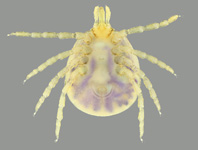Abstract
The genus Metadinium includes ophryoscolecid ciliates, with two retractile ciliary zones in the anterior body portion, two broad skeletal plates, a lobed macronucleus and two contractile vacuoles. Species belonging to this genus were recorded in several geographical locations and in different host species. However, they were mostly described based on a single ciliatological technique, and until now, there is only one description of the infraciliary pattern in Metadinium ciliates (Metadinium medium). The present study performs the morphological and infraciliature characterization of four species belonging to Metadinium: M. esalqum, M. minorum, M. rotundatum and M. ypsilon; and presents taxonomic notes on the genus. The oral infraciliature in these four Metadinium species corresponds to the Diplodinium-type, pattern shared with genera Diplodinium, Diploplastron, Eudiplodinium, Eremoplastron and Polyplastron. A brief review conducted highlights the difficulty of delimiting Metadinium species due to the morphological similarity among them.
References
Awerinzew, S. & Mutafowa, R. (1914) Material zur Kenntnis der Infusorien ausdem Magen der Wiederkaiier. Archiv für Protistenkunde, 38, 109–118.
Cedrola, F., Rossi, M., Dias, R.J.P., Martinele, I. & D’Agosto, M. (2015) Methods for taxonomic studies of rumen ciliates (Alveolata: Ciliophora): A brief review. Zoological Science, 32 (1), 8–15.
https://doi.org/10.2108/zs140125Cedrola, F., Senra, M.V.X., D’Agosto, M. & Dias, R.J.P. (2017) Phylogenetic analyses support validity of genus Eodinium (Ciliophora, Entodiniomorphida, Ophryoscolecidae). The Journal of Eukaryotic Microbiology, 64, 242–247.
https://doi.org/10.1111/jeu.12355D’Agosto, M. & Carneiro, M.E. (1999) Evaluation of lugol solution used for counting rumen ciliates. Revista Brasileira de Zoologia, 85, 725–729.
https://doi.org/10.1590/S0101-81751999000300011Dehority, B.A. (1975) Diplodinium (Ostracodinium) minorum sp. n., ciliate from the rumen of domestic sheep. Journal of Protozoology, 22, 328–330.
https://doi.org/10.1111/j.1550-7408.1975.tb05180.xDehority, B.A. (1979) Ciliate protozoa in the rumen of Brazilian water buffalo, Bubalus bubalis Linnaeus. Journal of Protozoology, 26, 536–544.
https://doi.org/10.1111/j.1550-7408.1979.tb04191.xDehority, B.A. (1984) Evaluation of subsampling and fixation procedures for counting rumen protozoa. Applied Enviromental Microbiology, 48, 182–185.
Dogiel, V.A. (1927) Monographie der Familie Ophryoscolecidae. Archiv für Protistenkunde, 59, 1–288.
Fernandez-Galiano, D. (1958) La infraciliación en Polyplastron multivesiculatum y su gênesis durante la division del ciliado. Boletín de la Real Sociedad Española de Historia Natural, 32, 89–102.
Fernandez-Galiano, D. (1979) Transfer of the widely known “spirotrich” ciliate Bursaria truncatella O.F.M. to the Vestibulifera as a separate order there, the Bursariomorphida. Transactions of the American Microscopical Society, 98, 447–454.
https://doi.org/10.2307/3225730Foissner, W. (2014) An update of 'basic light and scanning electron microscopic methods for taxonomic studies of ciliated protozoa'. International Journal of Systematic and Evolutionary Microbiology, 64, 271–292.
https://doi.org/10.1099/ijs.0.057893-0Ito, A. & Imai, S. (1998) Infraciliary bands in the rumen Ophryoscolecid ciliate Ostracodinium gracile (Dogiel, 1925), observed by light microscopy. The Journal of Eukaryotic Microbiology, 45, 628–636.
https://doi.org/10.1111/j.1550-7408.1998.tb04559.xIto, A. & Imai, S. (2003) Light microscopical observation of infraciliary bands of Eodinium posterovesiculatum in comparison with Entodinium bursa and Diplodinium dentatum. The Journal of Eukaryotic Microbiology, 50, 34–42.
https://doi.org/10.1111/j.1550-7408.2003.tb00103.xIto, A. & Imai, S. (2005) Infraciliature and morphogenesis in three rumen Diplodinium ciliates, Diplodinium polygonale, Diplodinium leche and Diplodinium nanum, observed by light microscopy. The Journal of Eukaryotic Microbiology, 52, 44–51.
https://doi.org/10.1111/j.1550-7408.2005.3312r.xIto, A. & Imai, S. (2006) Infraciliary band pattern of rumen Ophryoscolecid ciliates. Endocytobiosis and Cell Research, 17, 103–110.
Ito, A., Arai, N., Tsutsumi, Y. & Imai, S. (1997) Ciliate protozoa in the rumen of Sassaby Antelope, Damaliscus lunatus lunatus, including the description of a new species and form. The Journal of Eukaryotic Microbiology, 44, 586–591.
https://doi.org/10.1111/j.1550-7408.1997.tb05964.xIto, A., Miyazaki, Y. & Imai, S. (2001) Light microscopic observations of infraciliature and morphogenesis in six species of rumen Ostracodinium ciliates. The Journal of Eukaryotic Microbiology, 48, 440–448.
https://doi.org/10.1111/j.1550-7408.2001.tb00177.xIto, A., Miyazaki, Y. & Imai, S. (2002) Description of new Parentodinium ciliates in the Family Parentodiniidae n. fam. from Hippopotamus amphibius in comparison with some entodiniomorphs in horse and cattle. European Journal of Protistology, 37, 405–426.
https://doi.org/10.1078/0932-4739-00828Kofoid, C.A. & Christenson, J.F. (1933) Ciliates from Bos gaurus H. Smith. University of California Publications in Zoology, 33, 471–544.
Kofoid, C.A. & MacLennan, R.F. (1932) Ciliates from Bos indicus. II. The genus Diplodinium Schuberg. University of California Publications in Zoology, 37, 53–152.
Lubinsky, G. (1963) Metadinium caudatum sp. n. A rumen ciliate of musk ox from Northern Canada. Canadian Journal of Zoology, 41, 29–32.
https://doi.org/10.1139/z63-004Mishima, T., Katamoto, H., Hori, Y., Kakengi, V.A.M. & Ito. A. (2009) Rumen ciliates from Tanzanian short horn zebu cattle Bos taurus indicus and the infraciliature of Entodinium palmare n. sp. and Enoploplastron stokyi (Buisson, 1924). European Journal of Protistology, 45, 77–86.
https://doi.org/10.1016/j.ejop.2008.07.002Noirot-Timothée, C. (1960) Etude d’une familie de ciliés: les Ophryoscolecidae. Structure et ultrastructures. Annales des Sciences Naturelles Zoologie et Biologie Animale, 12, 526–718.
Rossi, M., Dias, R.J.P., Senra, M.V.X., Martinele, I. & D’Agosto, M. (2015) Molecular phylogeny of the family Ophryscolecidae (Ciliophora, Litostomatea) inferred from 18S rDNA sequences. The Journal of Eukaryotic Microbiology, 62, 584–590.
https://doi.org/10.1111/jeu.12211Rossi, M., Cedrola, F., Dias, R.J.P., Martinele, I. & D’Agosto, M. (2016) Improved silver carbonate impregnation method for rumen ciliate protozoa. Revista Brasileira de Zoociências, 17, 33–40.
Williams, A.G. & Coleman, G.S. (1992) The Rumen Protozoa. Springer, New York, 423 pp.
https://doi.org/10.1007/978-1-4612-2776-2

